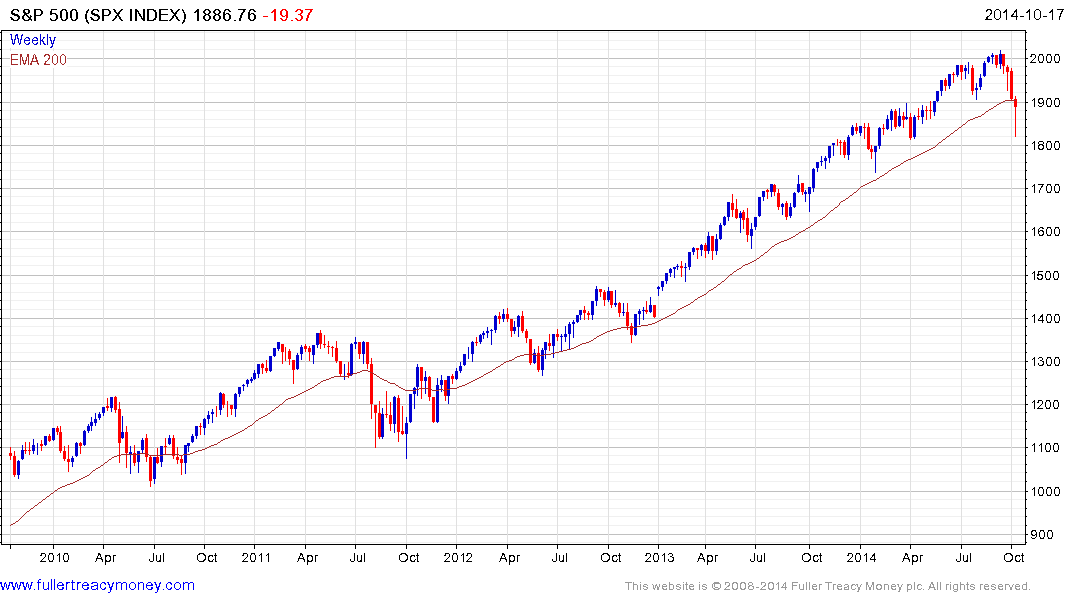Deflation fears are overdone
Thanks to a subscriber for this report from Deutsche Bank which may be of interest. Here is a section:
Overview: Over the last three months, inflation has fallen significantly, rekindling fears of deflation. Moreover, the fact that energy prices have collapsed—in part because of a stronger dollar—has caused the breakeven inflation rate to roll over. In turn, financial markets have pushed out the timing of Fed tightening and substantially reduced expectations for the terminal fed funds rate. Our analysis shows that core inflation is likely to trend higher over time, led by higher services prices. Goods prices have been soft, but there is little evidence to suggest they are likely to turn sharply lower. Finally, the dollar needs to appreciate significantly further to have any noticeable impact on core inflation.
Lower energy prices will not sink capex: Financial market participants are fretting the impact of falling energy prices on capital expenditures within the energy sector. In our view, these fears are overblown as oil- and gas-related investment is only about 10% of total nonresidential investment in equipment and structures, which is where business spending is captured in the GDP accounts. In total, business investment accounts for roughly 9% of real GDP. Hence, while energy-related capital spending could slow if oil prices remain depressed for a significant period of time, this may be worth only a tenth or two on inflation-adjusted output growth, which is not very much. In fact, as we recently highlighted, the positive effects from a boost to consumer spending should more than outweigh any negative impact from lower capital expenditures.
Here is a link to the full report.
There is the world of difference between deflationary and disinflationary action. In many respects the fall in oil prices is a major benefit for economies not least in terms of transport, heating/cooling and industry. If this translates into lower headline inflation it can be viewed as a positive for anyone with a medium to longer-term perspective. However for a central bank dedicated to fostering inflation in order to incrementally debase the value of outstanding debt it is not seen in such rosy terms.
The Fed’s decision on whether to eliminate scheduled purchases of Treasuries and mortgage bonds is due at the end of the month. I’m reminded of the idiom “There’s many a slip twixt the cup and the lip”. A cohort of investors and traders have responded to St. Louis Fed chairman Mr. Bullard’s dovish comments by concluding that a buy the dip strategy is still the best course of action because the Fed is still willing to ride to the rescue.

There is still potential for an additional short covering rally and unwind of the short-term oversold condition. However, looking at the charts as we would at The Chart Seminar there is cause for caution. You would naturally expect a trend to become progressively more consistent as it develops. Success breeds success and greater numbers of participants are converted to the bullish hypothesis. However when a previously consistent trend becomes inconsistent, we can no longer conclude that demand is becoming increasingly dominant. In fact we have to conclude the opposite. This means that evidence of support building will be required, that the recent lows hold on the next pullback, in order to demonstrate that demand is returning beyond a short-term rally.


